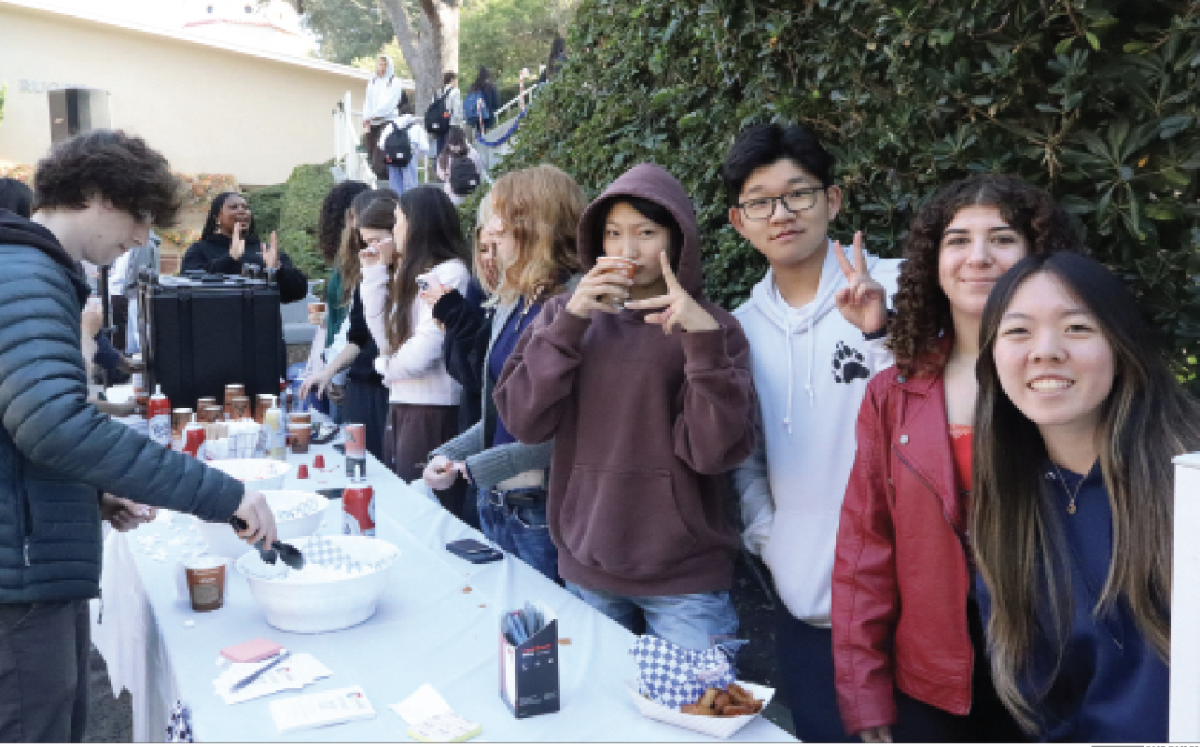By Daniel Rothberg
General Motorsâ new electric vehicle, the Chevrolet Volt, made a pit stop at a middle school assembly Nov. 30, en route to the Los Angeles Auto Show.
Using slides and short videos, Maria Rohrer of Chevrolet illustrated to students the necessity of transitioning to sustainable fuel and how the Volt is a step in making that transition possible.
Additionally, Rohrer explained how the Volt functions, and some of the features that make it unique.
The presentation was webcast live from the Bing Auditorium to more than 120 schools across the nation.
“We think that Harvard-Westlake is a place where there are a lot of future leaders,” said Tony Posawatz, Vehicle Line Director for the Chevrolet Volt, to explain why Harvard-Westlake was chosen to host the assembly.
The assembly was a part of the Harvard-Westlake STEM programâs continuing effort to excite students into pursuing careers in science, technology, and math.
“I thought it was the perfect opportunity to bring real world science to you guys,” Head of the Middle School Science Department David Cleland said in his introduction to the assembly.
Following the presentation, students and faculty congregated outside the auditorium around the as of yet unreleased Volt.
A chassis, the inside of the car, was also on display.
Students were given the opportunity to ask Chevrolet representatives about the car.
“These are the cars that kids your age are going to be driving,” said Shelby Fox â05, a public relations representative for General Motors. “Itâs great to introduce it to everybody now and get everyone excited about alternative cars, instead of typical cars that we might be exposed to on an everyday basis.”
The Volt will be released later next year, Rohrer said.
“We really think this is going to be the beginning of the electrification of the car,” Posawatz said. “So as opposed to a few hundred units of electric vehicles, Chevy plans, beginning next year, to begin building tens of thousands of electric cars. As the presentation stated, we will change the world by doing so.”
The Volt is an electric car with extended-range capability, meaning that should the Volt run out of electrical charge, the vehicle would begin running on a small gas-powered generator.
The Volt runs for 40 miles on one electrical charge and 300 miles total with the help of the fuel-powered engine. Eighty percent of Americans commute fewer than 40 miles per day, Rohrer said. Moreover, one Volt could save up to 500 gallons of gas per year, she said.
When plugged into a standard household outlet, the Volt can be recharged in about eight hours. However, for faster charging, the Volt can be plugged into a 240-volt outlet where it will re-charge in about three hours.
“It is our bridge to what were calling a gas free future that uses renewable energy,” Rohrer said. “The future of your transportation is truly electric. You can charge the battery and change the world.”
“I thought it was very interesting,” Luke Holthouse â13 said after the assembly. “The car is really cool looking and very much the future and itâs great that our generation is getting a look at how our life will be like when we do run out of gas. How we are going to react to that is our responsibility and I am glad that we are getting a chance to learn about how we should handle that.”
While Harvard-Westlake students gathered outside to catch a glimpse of the new vehicle, Rohrer answered questions from students from across the nation in a webchat.
After the assembly, Chevrolet handed out information to students about the car, complimentary tickets to the Los Angeles auto show and Chevrolet Volt t-shirts.
The assembly can be watched online at www.theweeklyreader.com and www.chevroletvoltage.com.
Â
Â




























